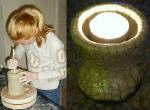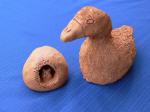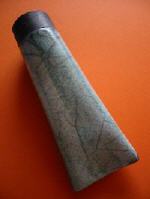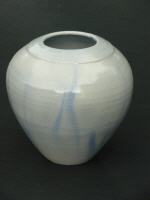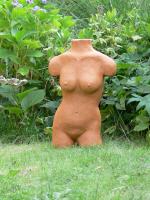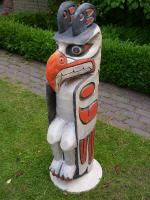 |
 |
 |
GETTING STARTED |
 |
|
|
First something about the clay to be used.
The type of clay that you need to use for Raku varies with the size and shape of the work that you make. Chamotte clay is commonly used.
|
|
|
|
|
In general, the higher the chamotte percentage is and the bigger the grain size, the stronger the clay will be, and the better it can cope with the rough handling of first the quick firing to 1000 °C and subsequent temperature shock.
|
|
|
|
|
Some examples:
This toothpaste tube is approx. 12 cm and is casted. The thin and uniform thickness gives relatively little material stresses and allowed usage of clay without any chamotte.
As the work that you cast gets bigger than there will be a moment that you have to add chamotte grains or for example some white sand.
|
|
|
|
|
Pieces that are thrown on a pottery wheel have generally also a relative thin and uniform material thickness making them very suitable for raku firing. However the shape plays a big also a big role here. A plate, although it is throw, is fragile specially when compared with a spherical/cylinder shape like a vase, which is very strong. Where for example clay 25% 0-0,5 mm may suit this spherical shape that you thrown you may need to apply clay with a more chamotte and/or bigger grain size for the a flat plate, for example 40% 0-1,0 mm.
|
|
|
|
|
And so the choice of the clay that you use needs to be optimised to size, shape, material thickness and uniformity of the material thickness.
This sculpture is approx. 45 cm. high and is made of clay, which contains 40% chamotte with a grain size of 0 - 2 mm.
Bisque firing is done at a temperature of max. 950 °C. No need to go higher than that. Firing on higher temperatures will not improve the resistance of your ware against the temperature shock. On the contrary, it will get worse.
|
|
|
|
|
For bigger sculptures it can be necessary to choose for example 50% Chamotte 0-3 mm, or even more 60% 0-5mm.
|
|
|
Printable Version
|


